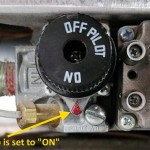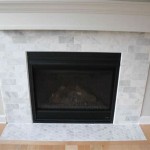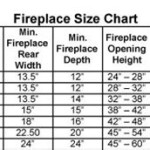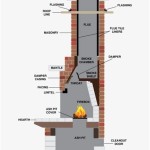Corner Fireplace Decorating in the Family Room: A Comprehensive Guide
A corner fireplace presents a unique design challenge within a family room setting. Unlike fireplaces centered on a wall, corner fireplaces require a specific approach to balance aesthetics, functionality, and spatial awareness. Maximizing the corner fireplace's potential involves considering layout, mantel decor, surrounding furniture arrangements, and overall room harmony. This article explores various strategies for effective corner fireplace decorating, aiming to create a visually appealing and welcoming family room.
Optimizing Space and Layout Around a Corner Fireplace
The immediate challenge of a corner fireplace is its inherent spatial demand. Unlike a flat wall, the corner placement creates an angled footprint that can interrupt the flow of the room and limit furniture placement options. A careful understanding of the room's dimensions and the fireplace's proportions is crucial.
Prior to any decorating, accurate measurements of the fireplace, including its width, depth, and height, are essential. These measurements will dictate the size and placement of furniture. Furthermore, consideration should be given to the "hearth area," the space directly in front of the fireplace. Local building codes often dictate minimum clearances from combustible materials to ensure safety. This area needs to remain largely unencumbered for safe operation and to prevent obstructions.
Furniture arrangement around a corner fireplace benefits from strategic angling. Instead of attempting to force rectangular furniture directly against the angled walls, consider positioning seating at a slight angle to the fireplace. This creates a more natural conversation area and reduces the feeling of the fireplace being awkwardly placed. A sectional sofa can be effectively used, with one section running along one wall and the other angled towards the fireplace. Armchairs can be placed opposite to complete the seating arrangement.
Another technique to maximize space is to exploit the vertical space above the fireplace. Tall bookshelves or built-in units flanking the fireplace can create visual symmetry and provide ample storage, effectively integrating the fireplace into the room's design. These units can house media equipment, books, or decorative items, contributing to a cohesive and organized look. However, it's important to maintain a sense of balance and avoid overwhelming the fireplace with overly bulky or elaborate structures.
Rugs can also be strategically used to define the seating area and visually anchor the furniture arrangement around the fireplace. An area rug placed in front of the fireplace and extending underneath the front legs of the furniture will help to unify the space and create a sense of cohesion. The size and shape of the rug should complement the shape of the seating arrangement and the overall dimensions of the room.
Selecting and Styling the Mantel and Surround
The mantel and surround of a corner fireplace provide a prime opportunity for expressing personal style and enhancing the room's decor. The material, style, and finishing of the mantel and surround should complement the overall aesthetic of the family room. Options range from traditional wood mantels to more contemporary stone or tile surrounds.
A traditional wood mantel lends itself well to classic and rustic decorating styles. The wood can be stained or painted to match the room's color palette. Consider the profile of the mantel – a simple, clean-lined mantel will suit a more modern aesthetic, while an ornate, carved mantel will complement a traditional or Victorian style. The depth of the mantel also matters; a deeper mantel provides more surface area for displaying decorative items.
Stone and tile surrounds offer a more contemporary and durable option. Stone can add a natural and textured element to the room, while tile provides a wide range of colors, patterns, and textures to choose from. Subway tiles, mosaic tiles, or large-format porcelain tiles can create a visually striking focal point around the fireplace. When selecting stone or tile, consider the overall color scheme of the room and the desired level of contrast. A contrasting surround can make the fireplace stand out, while a more subtle surround will blend in seamlessly with the room's decor.
Decorating the mantel itself involves careful curation and balance. Avoid cluttering the mantel with too many small items. Instead, focus on a few key pieces that make a statement. A large mirror placed above the mantel can help to reflect light and make the room feel larger. Artwork, such as a painting or a framed print, can also be used to create a focal point above the fireplace. When selecting artwork, consider the size and scale of the mantel and the overall style of the room. The artwork should be proportionate to the mantel and complement the room's color palette.
Candles, vases, and decorative objects can be used to add warmth and personality to the mantel. Vary the heights and textures of the objects to create visual interest. A collection of candlesticks of different heights can add a touch of elegance, while a vase filled with fresh flowers can bring a pop of color to the room. Consider incorporating seasonal decorations to keep the mantel looking fresh and updated throughout the year.
When decorating the mantel, it's important to maintain a sense of balance and symmetry. A symmetrical arrangement, with two identical objects placed on either side of the mantel, can create a sense of formality and order. An asymmetrical arrangement, with objects of different sizes and shapes placed on either side of the mantel, can create a more relaxed and casual feel. Experiment with different arrangements until you find one that you like.
Integrating Technology and Functionality
Modern family rooms often incorporate technology, necessitating careful integration around the corner fireplace. The placement of televisions and other electronic devices requires mindful planning to prevent visual clutter and ensure optimal viewing angles and safety.
Mounting a television above the fireplace is a common practice, but it's crucial to consider the ergonomic implications. A television mounted too high can cause neck strain and discomfort. The ideal viewing height is typically at eye level when seated. A tilting mount can help to compensate for a higher mounting position, but it's still important to minimize the vertical distance between the television and the seating area. Furthermore, heat generated by the fireplace can potentially damage electronic components. Ensure adequate ventilation and insulation to protect the television from excessive heat exposure.
Another option is to place the television on a wall adjacent to the fireplace. This allows for a more comfortable viewing height and avoids the potential heat-related issues associated with mounting the television above the fireplace. A wall-mounted television can also free up floor space and create a cleaner, more streamlined look.
Media consoles and cabinets can be used to house electronic equipment, such as cable boxes, DVD players, and gaming consoles. These units can be placed on either side of the fireplace or along an adjacent wall. Choose a media console that complements the style of the room and provides ample storage space for all of your electronic equipment. Consider incorporating cable management systems to keep wires and cables organized and out of sight.
In addition to technology, consider the functionality of the fireplace itself. Fireplace tools, such as a poker, shovel, and tongs, are essential for maintaining a wood-burning fireplace. These tools can be stored in a decorative tool set or hung on a wall-mounted rack. A fire screen or spark guard is also essential for preventing embers from escaping the fireplace and causing a fire hazard. Choose a fire screen that complements the style of the room and provides adequate protection.
Firewood storage is another practical consideration. Firewood can be stored indoors in a decorative log holder or outdoors in a covered woodpile. If storing firewood indoors, ensure that it is properly seasoned and free from pests. A decorative log holder can add a rustic touch to the room and keep firewood readily accessible.
By carefully integrating technology and functionality into the design of the corner fireplace, it is possible to create a family room that is both stylish and practical.

Working With A Corner Fireplace Emily Clark

How To Design Around A Corner Fireplace

How To Arrange Furniture With A Corner Fireplace Setting For Four Interiors

Home Staging Project Orange County Ca Decor

12 Corner Fireplace Ideas Cozy Looks To Warm Up The Living Room Real Homes

Working With A Corner Fireplace Emily Clark

How To Arrange Furniture With A Corner Fireplace Setting For Four Interiors
:max_bytes(150000):strip_icc()/Snapinsta.app_330833096_211211108122954_2927897200506377169_n_1080-7221696cd57e430b88e85a3893a6320c.jpg?strip=all)
25 Corner Fireplace Ideas To Make A Cozy Statement

Top 15 Small Living Room With Fireplace And Tv Decorating Ideas Furniture Layout Corner Comfy Decor

How To Decorate A Corner Fireplace Mantel For The Holidays Making It In Mountains








